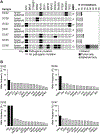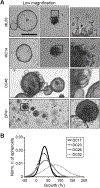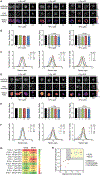Patient-Derived Cancer Organoid Cultures to Predict Sensitivity to Chemotherapy and Radiation
- PMID: 31175091
- PMCID: PMC6726566
- DOI: 10.1158/1078-0432.CCR-18-3590
Patient-Derived Cancer Organoid Cultures to Predict Sensitivity to Chemotherapy and Radiation
Abstract
Purpose: Cancer treatment is limited by inaccurate predictors of patient-specific therapeutic response. Therefore, some patients are exposed to unnecessary side effects and delays in starting effective therapy. A clinical tool that predicts treatment sensitivity for individual patients is needed.
Experimental design: Patient-derived cancer organoids were derived across multiple histologies. The histologic characteristics, mutation profile, clonal structure, and response to chemotherapy and radiation were assessed using bright-field and optical metabolic imaging on spheroid and single-cell levels, respectively.
Results: We demonstrate that patient-derived cancer organoids represent the cancers from which they were derived, including key histologic and molecular features. These cultures were generated from numerous cancers, various biopsy sample types, and in different clinical settings. Next-generation sequencing reveals the presence of subclonal populations within the organoid cultures. These cultures allow for the detection of clonal heterogeneity with a greater sensitivity than bulk tumor sequencing. Optical metabolic imaging of these organoids provides cell-level quantification of treatment response and tumor heterogeneity allowing for resolution of therapeutic differences between patient samples. Using this technology, we prospectively predict treatment response for a patient with metastatic colorectal cancer.
Conclusions: These studies add to the literature demonstrating feasibility to grow clinical patient-derived organotypic cultures for treatment effectiveness testing. Together, these culture methods and response assessment techniques hold great promise to predict treatment sensitivity for patients with cancer undergoing chemotherapy and/or radiation.
©2019 American Association for Cancer Research.
Conflict of interest statement
Conflicts of interest:
The authors declare no potential conflicts of interest.
Figures






Comment in
-
The Use of the Protease Inhibitor, Saquinavir, to Treat Anal Cancer Spheroids Derived From Human Papillomavirus Transgenic Mice.Dis Colon Rectum. 2023 Mar 1;66(3):360-365. doi: 10.1097/DCR.0000000000002623. Epub 2023 Jan 4. Dis Colon Rectum. 2023. PMID: 36599112 Free PMC article.
References
-
- Solomon BJ, Mok T, Kim DW, Wu YL, Nakagawa K, Mekhail T, et al. First-line crizotinib versus chemotherapy in ALK-positive lung cancer. N Engl J Med 2014;371:2167–77. - PubMed
Publication types
MeSH terms
Grants and funding
LinkOut - more resources
Full Text Sources
Other Literature Sources
Medical

